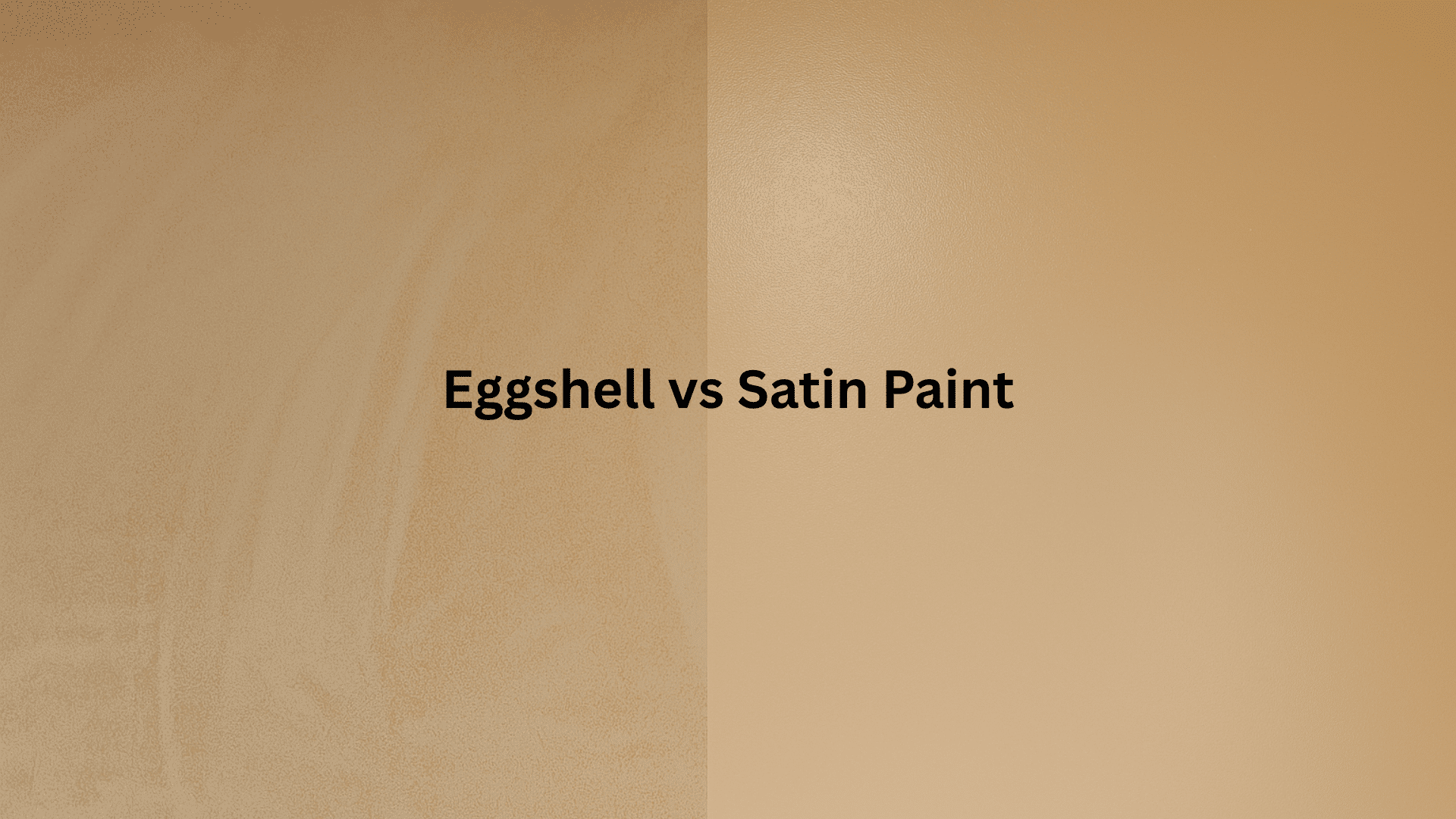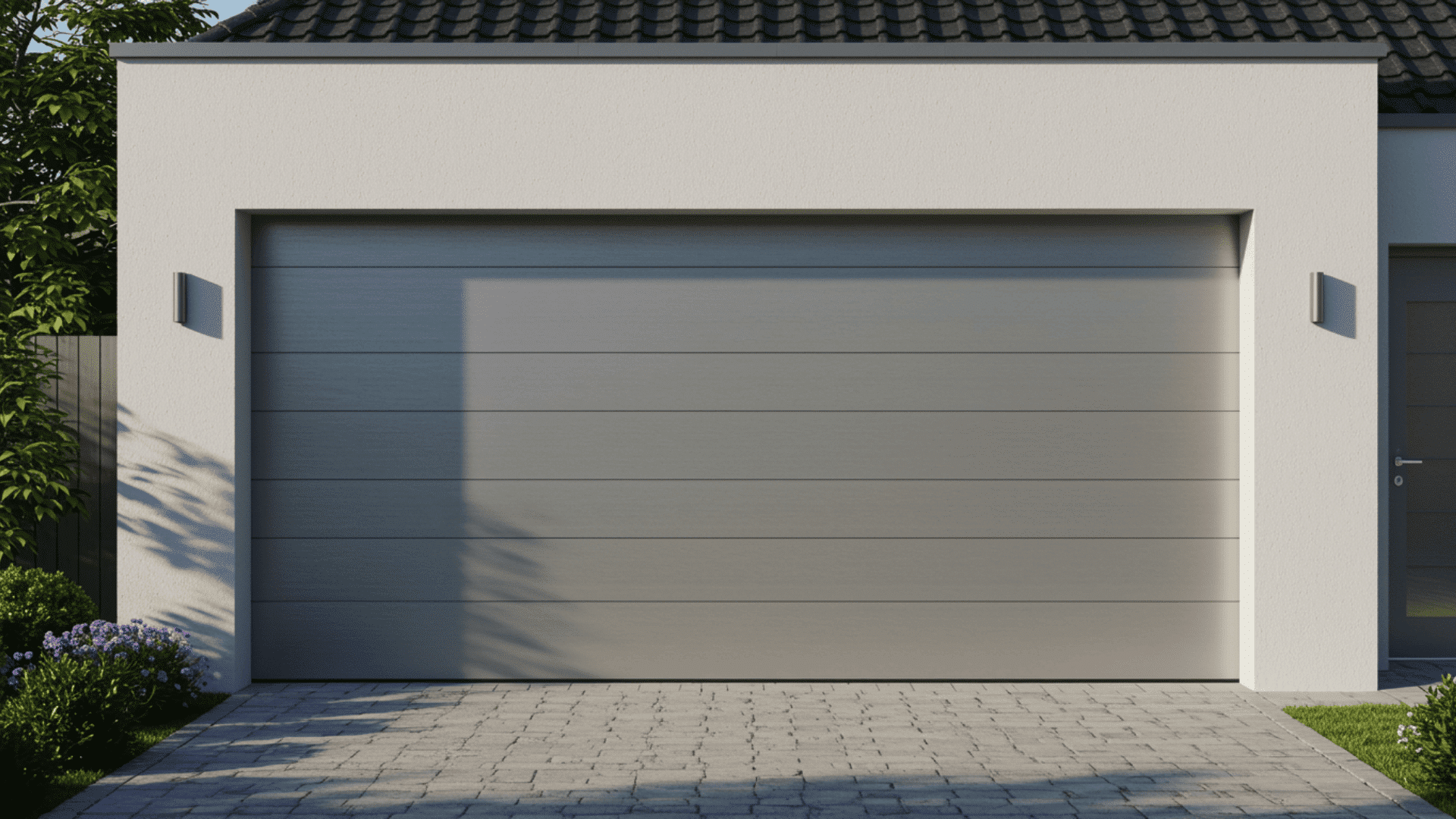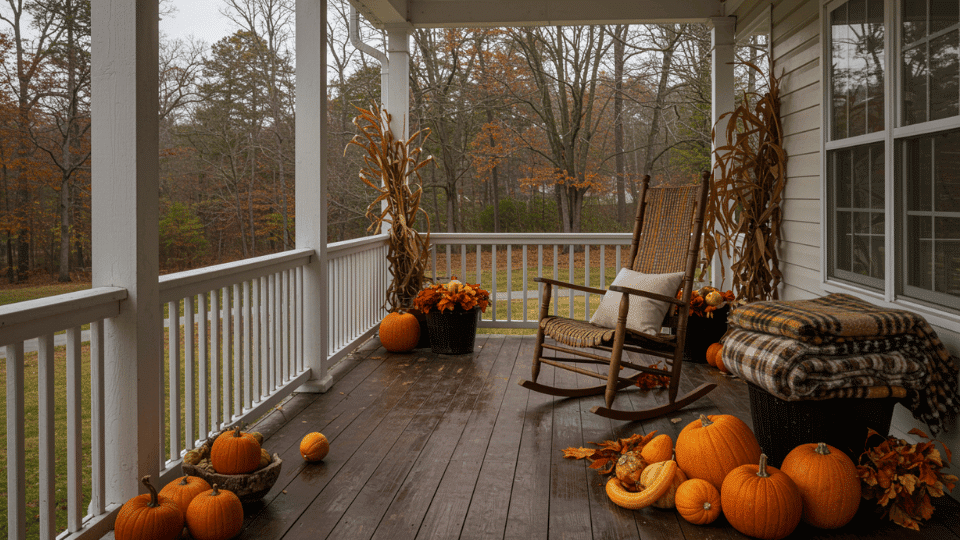Most owners ignore their roofs until trouble hits, but flat roofs hide warning signs long before disaster strikes, and knowing these secrets separates roofs that last from those that fail early.
I’ve noticed hidden signs: pooling water, worn materials, damaged edges most owners miss.
It reveals one truth: flat roof maintenance isn’t just smart. It’s the only essential barrier between your home and expensive damage.
Key Components of Flat Roof System
Understanding your flat roof’s layers reveals what needs attention during maintenance. Each component plays a specific role in protecting your building from weather damage.
- Membrane: The primary waterproof barrier that shields against moisture and requires regular checks for tears or damage.
- Substrate: Provides the structural foundation supporting all other roof layers above it.
- Insulation: Regulates indoor temperature and prevents costly energy loss through the roof.
- Drainage System: Includes scuppers, drains, and gutters that direct water away from the structure to prevent destructive pooling.
- Flashing: Seals vulnerable spots around edges, vents, and protrusions where leaks commonly start.
These components work as a system, and regular flat roof maintenance keeps each part functioning properly, significantly extending your roof’s lifespan.
Step-by-Step Guide to Cleaning Flat Roofs
Cleaning flat roofs properly requires the right approach and tools. Follow these five steps to safely remove debris, prevent damage, and maintain optimal performance
Tools and Materials Required
Gathering the proper equipment before starting ensures safe, efficient cleaning. Using appropriate tools protects the membrane while delivering thorough results without causing damage
| ITEM | USE | SAFETY and USE |
|---|---|---|
| Non-slip shoes & gloves | Safety and grip | Always work on a dry roof |
| Ladder | Safe access | Secure the base and have a helper nearby |
| Soft broom or leaf blower | Remove debris | Avoid metal tools that can puncture membranes |
| Mild detergent or roof-safe cleaner | Wash surface | Choose a cleaner suited to your roof material |
| Bucket & garden hose (low pressure) | Apply and rinse the cleaner | Never use a pressure washer |
Step 1: Prepare and Inspect

Check the weather before cleaning a wet or windy roof. Put on non-slip shoes and gloves, set your ladder securely, and have a helper nearby.
Once you’re up, inspect the surface carefully for soft spots, cracks, or lifting seams. Mark any damaged areas with removable tape. This ensures you don’t worsen hidden issues during cleaning.
Step 2: Remove Debris and Obstructions

Use a soft broom or blower to clear away leaves, branches, and dirt. Start from the highest points and work toward the drains.
Pay attention to vents, edges, and parapet walls where debris tends to accumulate. Then, unclog drains and gutters, scoop out buildup, flush with a hose, and make sure water flows freely through all outlets.
Step 3: Apply Cleaning Solution

Mix mild detergent and water in a bucket, or use a cleaner suitable for your roof type (EPDM, TPO, PVC, etc.). Work in sections, applying the solution with a mop or soft brush.
Scrub gently to remove grime, algae, or stains. Avoid strong chemicals or high-pressure tools, as they can weaken seams or coatings.
Step 4: Rinse and Check Drainage
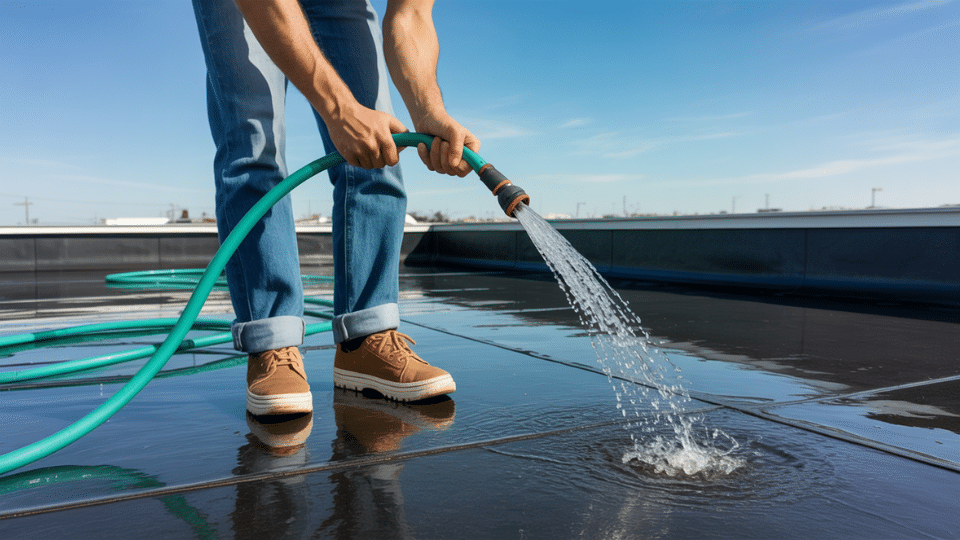
Rinse each section with a low-pressure hose, starting from the highest point. Let the water run naturally toward drains and watch how it flows.
Standing water after a few minutes can signal poor drainage or slope issues. Avoid spraying directly into seams or vents. The goal is a clean, residue-free surface with good runoff.
Step 5: Final Inspection and Maintenance Routine
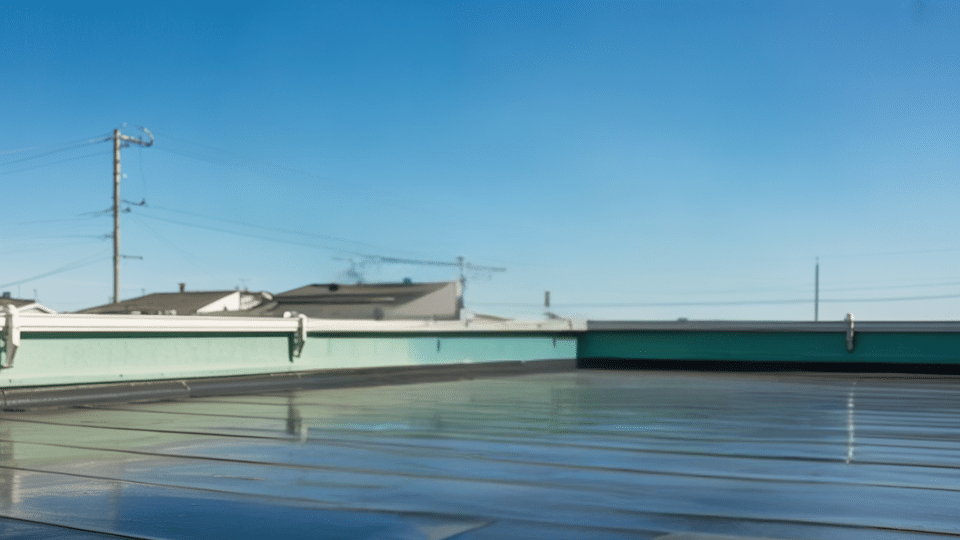
When the surface dries, do a final walk-through. Recheck marked areas, seams, flashing, and drains. Take photos and note the date and any issues.
Clean your flat roof twice a year, in spring and fall, or after big storms. Regular maintenance prevents leaks, extends roof life, and protects your building investment.
Routine Flat Roof Maintenance Checklist
Consistent flat roof maintenance requires a systematic approach. This comprehensive checklist ensures no critical component gets overlooked, preventing costly repairs.
1. Scheduled Inspections
Regular inspections form the foundation of effective flat roof maintenance. Conducting thorough checks in spring and fall, as well as after severe weather events, helps catch problems before they escalate into costly repairs.
Inspection Checklist:
☐ Examine the membrane for cracks and blisters
☐ Check for sagging or uneven areas
☐ Inspect seams for separation or lifting
☐ Look for standing water or pooling
☐ Document findings with photos and dated notes
☐ Record any changes since last inspection
2. Debris Management
Regular cleaning prevents drainage blockages and extends your roof’s life by removing debris that traps moisture against the membrane, accelerating wear and creating conditions for leaks.
Debris Removal Checklist:
☐ Use a soft-bristle broom or leaf blower
☐ Avoid metal tools that damage the membrane
☐ Clear debris around all drain openings
☐ Clean around vents and skylights
☐ Remove buildup near HVAC units
☐ Dispose of debris properly
3. Drainage System Upkeep
Proper drainage prevents damaging water accumulation by keeping gutters, scuppers, and downspouts clear so water flows freely off the surface, protecting your roof from moisture damage and premature aging.
Drainage Maintenance Checklist:
☐ Clear all gutters of leaves and debris
☐ Flush downspouts with water
☐ Check scuppers for blockages
☐ Verify proper slope toward drains
☐ Monitor for standing water after rain
☐ Address pooling that persists beyond 48 hours
4. Inspect Flashings & Seals
Flashings protect vulnerable roof edges and penetrations from water infiltration, and regular inspection combined with proactive tree trimming prevents leaks and damage from falling branches and debris.
Flashing Inspection Checklist:
☐ Examine flashing around roof edges
☐ Check seals at chimneys and vents
☐ Look for cracked or dried caulking
☐ Test for loose or lifting flashing
☐ Trim overhanging tree branches
☐ Reseal gaps as needed
Seasonal Roof Maintenance Tips
Each season brings unique challenges that require specific flat roof maintenance tasks. Following this seasonal schedule protects your roof year-round and catches problems early.
| SEASON | KEY MAINTENANCE ACTIONS |
|---|---|
| Spring | Inspect for winter damage from ice or thaw cycles. Clear debris and ensure proper drainage for smooth water flow. |
| Summer | Check for cracks, blisters, or bubbling from heat. Maintain reflective coatings to prevent UV deterioration. |
| Fall | Remove leaves, branches, and organic debris. Clean drains, gutters, and scuppers to prepare for winter. |
| Winter | Monitor snow and ice buildup to prevent excess weight. Watch ceilings for water stains indicating leaks. |
Staying ahead of seasonal issues through regular cleaning of flat roofs and inspections prevents small problems from becoming costly repairs that compromise your roof’s integrity.
Budget Planning and Professional Care
Smart flat roof maintenance means investing in professional care to prevent costly emergencies. Understanding your options helps you protect your roof while managing costs effectively.
- Professional Inspections: Expert roofers use thermal imaging and advanced leak detection to find hidden problems before they escalate, catching issues invisible to untrained eyes and preventing costly water damage.
- Protective Coatings: High-quality roof coatings enhance waterproofing and UV resistance, extending your membrane’s lifespan significantly while shielding against weather extremes and daily wear.
- Maintenance Contracts vs. Repairs: Annual flat roof maintenance contracts cost far less than emergency repairs or full replacements, making prevention consistently more affordable than reactive fixes.
- Long-Term Savings: Routine care, including cleaning flat roofs and scheduled inspections, extends roof life two to three times longer than neglected systems.
The upfront investment in professional maintenance pays for itself through extended roof life and avoided emergency repairs that cost thousands more than preventive care.
The Bottom Line
Flat roof maintenance stays simple when you’re consistent with inspections and cleaning, addressing small issues early.
I’ve covered the essential steps: clearing drains, checking flashings, and scheduling inspections, which keep roofs working properly for decades.
Regular care saves money over emergency repairs, so don’t wait for leaks to appear.
Start with a thorough inspection today, and I recommend scheduling professional maintenance at least twice yearly to catch problems early and protect your investment.



